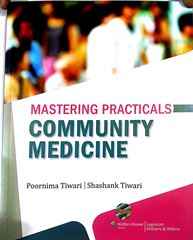
Dietary survey is done to assess the quantities of food items and nutrients consumed by the family or an individual. The nutrition composition is calculated using tables of nutritive value of common foods. These tables are given in the ICMR publication: Nutritive Value of Indian Foods.
There are various methods of dietary survey. Each is suitable for a different set of circumstances.
• Weighment of raw foods: The survey team visits the household and weighs all the food that is going to be cooked and eaten. Also the amount which is left over or discarded is weighed. A surveyor needs to make at least two visits prior to the main meals being cooked
• Weighment of cooked foods: Cooked food is weighed instead of the raw materials. In Indian homes, this is not a very acceptable thing. Hence, this is more appropriate for dietary assessment of institutions, hostels, etc.
• 24-hour recall method (questionnaire method) is explained in detail here: http://www.ihatepsm.com/blog/24-hour-recall-questionnaire-method
• Food frequency questionnaire method: This is for assessing how frequently an item is consumed during a fixed time period, e.g., in a week. It is more suitable for studying the diet patterns and dietary habits of a population
• Food balance sheet method: This method is suitable when information regarding the availability and consumption of food is required at a macro level like at the global, national, region, or state levels
• Duplicate sample method
The commonly used method of dietary survey is ’24 hour recall’ method and is explained in detail: http://www.ihatepsm.com/blog/24-hour-recall-questionnaire-method
References:
1. ICMR. Nutrient Requirements and Recommended Dietary Allowances for Indians. Hyderabad: National Institute of Nutrition; 2009.
2. ICMR. Nutritive Value of Indian Foods. Hyderabad: National Institute of Nutrition; 1996.
3. Nutrition in India. UN ACC/SCN Country case study supported by UNICEF Annex I: food consumption data: the national nutrition monitoring bureau and national sample survey organization. Available at: http://www.unsystem.org/scn/archives/india/ch13.htm. Accessed January 13, 2012.
4. Gupta RK. Nutritional assessment and surveillance of a community. In: Vaidya R, Tilak R, Gupta R, Kunte R, editors. Text Book of Public Health and Community Medicine, 1st ed. Pune: Dept. Community Medicine, AFMC, in collaboration with WHO, India office, Delhi; 2009.
5. Park K. Nutrition and health. In: Park’s Textbook of Preventive and Social Medicine, 20th ed. Jabalpur, India: M/S Banarasidas Bhanot Publishers; 2009.
6. Poornima Tiwari, Shashank Tiwari. Chapter 13, In: Mastering Practicals in Community Medicine. 2nd ed. Lippincott Williams & Wilkins, New Delhi
7. Sunder L, Adarsh, Pankaj. Applied nutrition. In: Sunder L, Adarsh, Pankaj, editors. Textbook of Community Medicine, 1st ed. New Delhi: CBS Publishers and Distributors; 2007.
(adsbygoogle = window.adsbygoogle || []).push({
google_ad_client: "ca-pub-2296304216845141",
enable_page_level_ads: true
});
Modified Kuppuswamy Classification of Socio - Economic Class: http://www.ihatepsm.com/blog/modified-kuppuswamy-scale
Prasad's Scale: http://www.ihatepsm.com/blog/prasad%E2%80%99s-scale
Dependency Ratio: http://www.ihatepsm.com/blog/dependency-ratio
Assessment of Overcrowding in a Household: http://www.ihatepsm.com/blog/assessment-overcrowding-household
Checking Adequacy of Lighting in a Room: http://www.ihatepsm.com/blog/checking-adequacy-lighting-room
Assessment of Adequacy of Ventilation: http://www.ihatepsm.com/blog/assessment-adequacy-ventilation
Family and the Types of Family: http://www.ihatepsm.com/blog/family-and-types-family
Checking for Mosquito Breeding Areas in a Household: http://www.ihatepsm.com/blog/checking-mosquito-breeding-areas-household
Life Cycle of Housefly: http://www.ihatepsm.com/blog/life-cycle-housefly
Types of Piped Water supply: http://www.ihatepsm.com/blog/types-piped-water-supply
Reference Indian Adult Man and Woman: http://www.ihatepsm.com/blog/reference-indian-adult-man-and-woman
Concept of the “Consumption Unit”: http://www.ihatepsm.com/blog/concept-%E2%80%9Cconsumption-unit%E2%80%9D
Methods of Dietary Survey: http://www.ihatepsm.com/blog/methods-dietary-survey
24-Hour Recall (Questionnaire) Method: http://www.ihatepsm.com/blog/24-hour-recall-questionnaire-method
Determination of Socio-economic Status of a Family in a Rural Area (the Uday Pareekh Scale): http://www.ihatepsm.com/blog/determination-ses-family-rural-area-uday-pa...
7 Terms used in Maternal and Child Health: Definition and Explanation: http://www.ihatepsm.com/blog/7-terms-used-maternal-and-child-health-defi...
Terms used in Family Health Study: Definitions and Explanations: http://www.ihatepsm.com/blog/terms-used-family-health-study-definitions-...
Lecture on the definitions and explanations of terms used in Family Health Study: http://www.ihatepsm.com/resource/terms-used-family-health-study-definiti...
Hindi lecture on the definitions and explanations of terms used in Family Health Study: http://www.ihatepsm.com/resource/terms-used-family-health-study-definiti...
Hindi lecture on CSC taking: https://www.youtube.com/watch?v=9gvuXrIJ_gY&t=10s
English lecture on CSC taking: https://www.youtube.com/watch?v=rKxXIyJuBz8&t=24s
Format for CSC taking: http://www.ihatepsm.com/blog/format-clinico-social-case-taking-community...
Geriatric CSC taking: http://www.ihatepsm.com/blog/geriatric-clinico-social-case-community-med...
